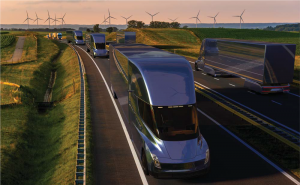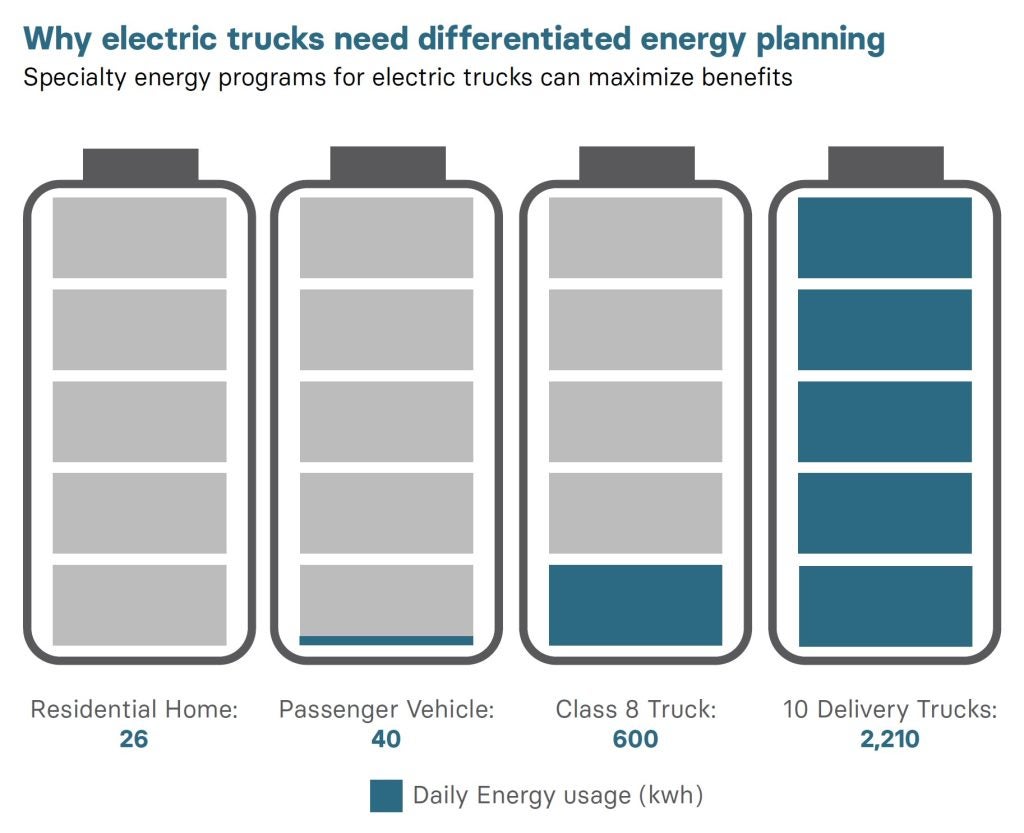Solving the EV charging challenge: A how-to guide for regulators
 By Larissa Koehler and Pamela MacDougall
By Larissa Koehler and Pamela MacDougall
We are at a pivotal moment in the electric vehicle revolution. Demand for electric cars outpaced their fossil fuel alternatives in the United States, Europe and China last year. And, demand for electric trucks and buses could jump tenfold over the next decade as interest among business and government surges.
Yet the complexities around charging still remain a major barrier to wide-scale adoption.
While state and federal legislators are setting ambitious goals for the electrification of vehicles, utility regulators across the country are the ones untangling many of the (literal) wires of how to achieve these targets. Via utility commission proceedings to consider aspects of vehicle electrification, utility plans to electrify vehicles, and stakeholder working groups, regulators are increasingly being tasked with figuring out how to integrate the tsunami of EVs plugging into the grid.
A new report from EDF, Accelerating Electric Vehicle Infrastructure: A How-to Guide for Regulators, offers guideposts for policymakers as they navigate this unprecedented transition in a way that’s clean, equitable, reliable and cost-effective.
A few highlights include:
1. Regulators should differentiate policy approaches for electric cars vs. trucks and buses. Medium- and heavy-duty vehicles have much different charging requirements than passenger cars, and therefore should require special consideration. For example, recharging electric medium- and heavy-duty vehicles powerful enough to haul freight generally involves equipment that is bigger and more expensive than for passenger vehicles, and may therefore require more maintenance. (The power needed to charge these bigger vehicles — and how different it is compared to light-duty vehicles — is shown in the graphic below.) To capture the benefits associated with electrification across the full range of vehicle types and business models, state policymakers and utilities should create tailored policies and programs that support electric medium- and heavy-duty vehicles as well as electric light-duty vehicles. Public spending on widespread charging infrastructure — at least including equipment on the utility side of the meter, and potentially rebates and customer-side installations — will be necessary in the near-term to promote greater levels of private investment.
2. Equity should be a primary consideration when planning for EV infrastructure deployment. Communities of color and disadvantaged populations make up a higher percentage of the populations near roads and highways, meaning they shoulder the greatest health burden from vehicle pollution. Therefore, deployment of charging stations, particularly those needed to support electric MHDVs, should be prioritized in low-income, pollution-burdened communities where the air quality benefits of electrification will be felt immediately. Efforts at both the state and utility level need to be concentrated around proactively and meaningfully engaging stakeholders from these communities to identify and overcome barriers to EV deployment. In addition, equitable outcomes will also mean that small businesses seeking to make the transition to electric vehicles will have the means to do so — with financial assistance provided by states and utilities — and the education to understand the benefits of zero-emission vehicles.
3. Electricity rates should maximize the benefits of EVs. EVs are often labelled as a challenge for the grid. However, if incentives and proper planning are in place, these vehicles can become a grid asset and solution to meeting zero-emission targets in the energy sector. Utilities should structure rates to incentivize charging at times when low-cost, renewable energy is abundant and when demand is lower. They should provide a suite of options that accommodate the varied needs and capabilities of electric passenger cars and MHDVs, ensuring fuel-cost savings where feasible, and minimizing grid infrastructure build-out. In this way, utilities can integrate EVs in a cost-effective way through price signals. This will save drivers money and reduce system costs, which is good for all ratepayers.
This is just a sampling of the guidelines we cover in our report, which policymakers and utilities should adopt to drive a more rapid, widespread and equitable deployment of EVs and their infrastructure. You can explore the full list of seven principles in our report.
The arrival of EVs may represent the biggest upheaval to the electricity industry since Edison invented the lightbulb. In many ways, policymakers are still building the plane while flying it. But with the right approach, state policymakers and utilities will be able to rise to the challenge of ushering in this new era of electric vehicles — and build a future that is cleaner, greener, more equitable and resilient.










